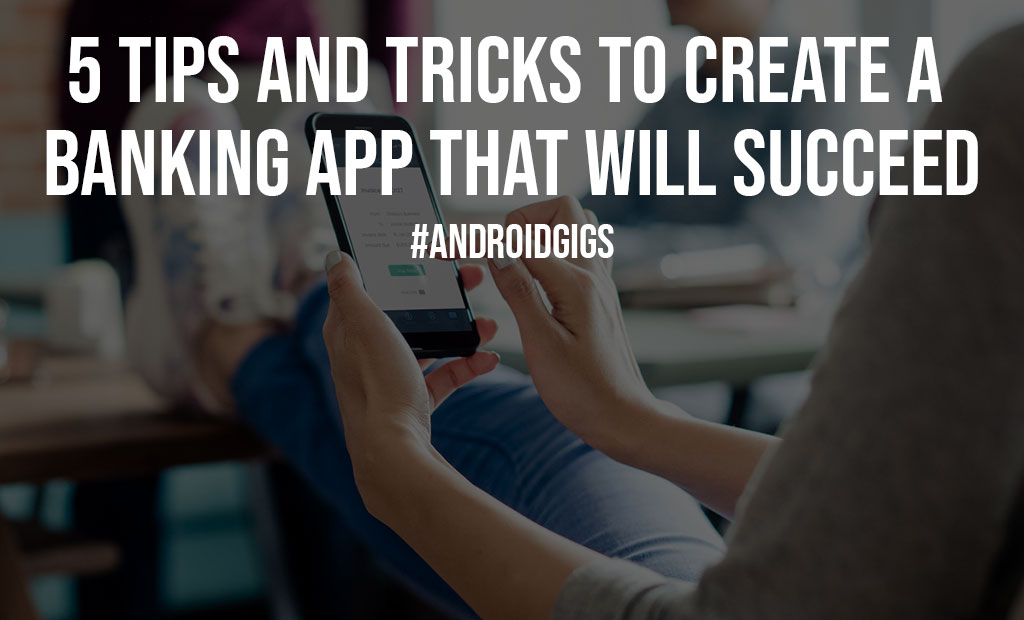Remember the days when visiting the bank for every single transaction was the way to go? Well, thanks to banking apps, you have it all in the palm of your hands. However, the functionality of your banking app will determine whether it will be a welcome project or not.
Are you looking for information on how to create a mobile banking app? Then you need to understand the processes behind a successful banking app creation which is why we will be covering the tips and tips to create a banking app that will succeed.
Not every banking app succeeds, especially because it has to do with something sensitive – money.

This is why these tips will help ensure that you create a bank app that succeeds right from the start.
Why You Need to Build Banking Apps
In very simple terms, one of the best reasons you need to build banking apps is that it helps save operational costs. It also makes things easier for your customers, making it easy to retain them. Some of the major features of banking apps include:
- Payments
- Balance and transactions
- Manage cards
- Push notifications
- Check deposit
- Expense tracking etc.
In the contemporary era of technological advancements, banking applications have become an integral part of the financial ecosystem. One of the prime benefits of developing a banking app is the significant reduction in operational costs. Traditional banking involves a plethora of paper-based transactions and manual interventions.
One remarkable feature that can be integrated into banking apps to further enhance their utility is Invoice Capture Software. This addition will empower users to easily capture and manage invoices. For businesses, in particular, this is a game-changer. Instead of manually entering invoice data, users can simply take a picture or upload a digital copy of an invoice, and the software will automatically extract all the relevant information using OCR (Optical Character Recognition) technology.
In addition to cost savings, banking applications greatly enhance customer experience. For instance, making payments is simplified to a few clicks instead of having to visit a branch or write checks. Customers can also easily view their account balance and transaction history, which helps in maintaining financial discipline. The ability to manage cards through the app provides customers with greater control and security. Furthermore, the integration of push notifications ensures that customers are always informed about the latest updates and transactions. Innovative features like remote check deposits also add to the convenience as customers can deposit checks using their mobile device’s camera. Expense tracking is another noteworthy feature, allowing users to monitor and analyze their spending patterns and make informed financial decisions.
5 Steps to Create a Banking App
If you are looking to create a mobile banking app, here are some of the steps you need to follow:
1. Build a prototype and verify it
If you are looking to create mobile banking applications, your first consideration should not be the programming language or the architecture of the app but rather the problem the app is going to be solving.
Next, you need to consider your target audience and deploy it. This way, you can verify it with your target audience and understand your next move. This gives you a vision of the direction your banking app is going to take.
Also Read: How to Choose iOS App Development Company?
2. Ensure there is adequate security
Once you are done building a prototype with a direction in mind, you need to push security. There’s no way around it; people will not want to use your banking app if your security is not tight. Word spreads fast, and people need to trust your app.
You need to add some of the best security protocols like constant security updates, transaction verifications, and two-factor authentication to ensure people feel safe using your app.
3. Code the App
Once you have all these factors we mentioned sorted out, you need to go to the programming aspect of the app. It is time-consuming but for good reason because this is when the prototype is developed into a live app.
If you want to know how long it takes to build a banking app, this is a major determining factor. You need to ensure that you speak with your developers and ensure that your direction aligns with the coding.
4. Enhance the app using integrations
There are numerous fintech apps that can be used to connect with user bank accounts which makes it easy for inter-bank transfers. This is important because it helps connect to other banks, making it easy for users to transfer from your banking app to another.
The exact goal of your banking app will help you determine the right vendor for the app.
Also Read: 7 Useful Android Learning Apps for Students
5. Launch and Maintain
Once you create a banking application in android or iOS, you launch. After all the hard work and effort has been put into place, this is one of the most rewarding aspects of creating a banking app.
After launching, you need to find time to correct some mistakes made with updates and security patches. Check out the reviews on your app and ensure you update it at the right time.
These are some of the best tips to create a banking app, and while it takes a lot of hard work, it is rewarding if you get it right. Look through these tips, draw a plan and then execute.
